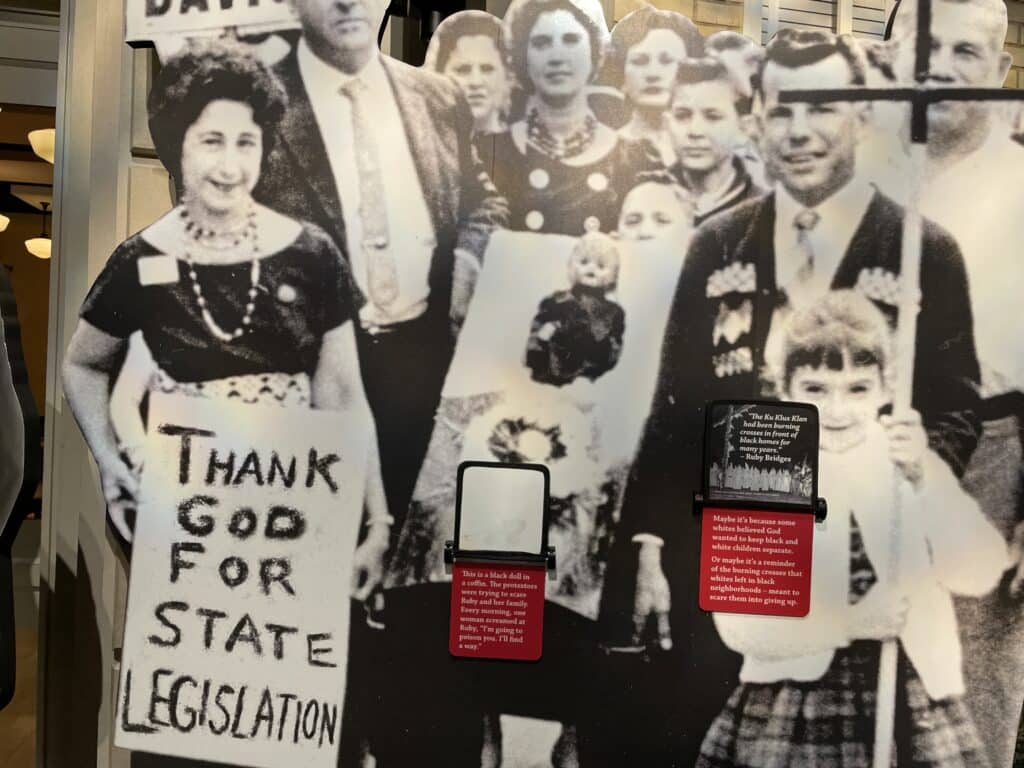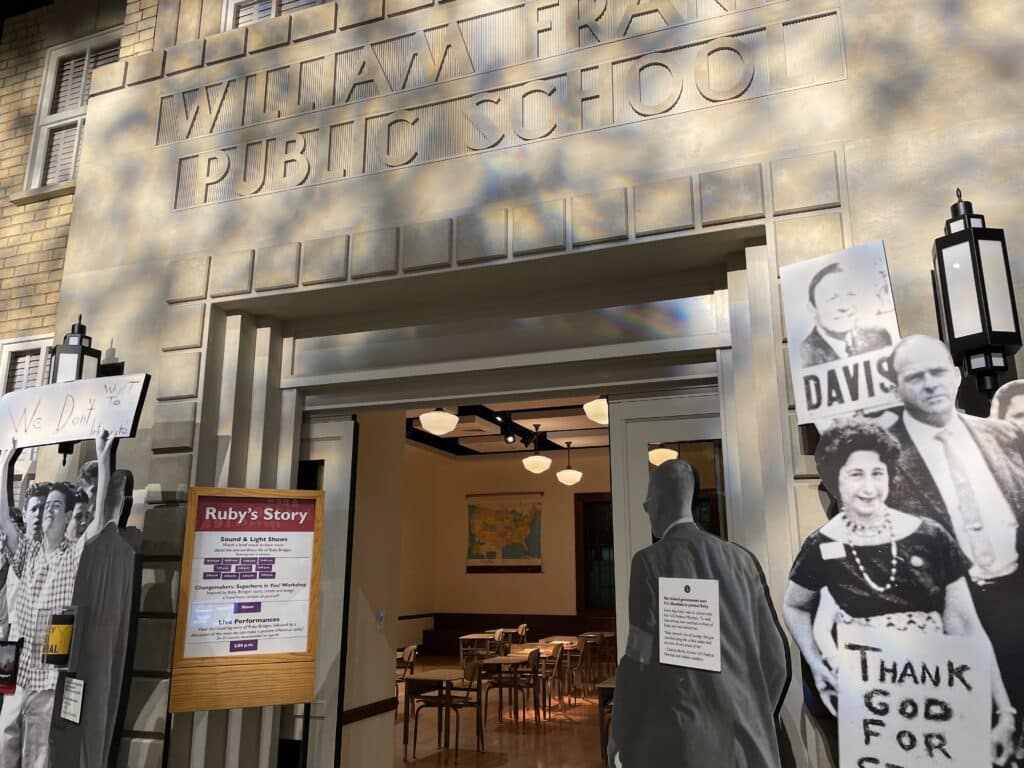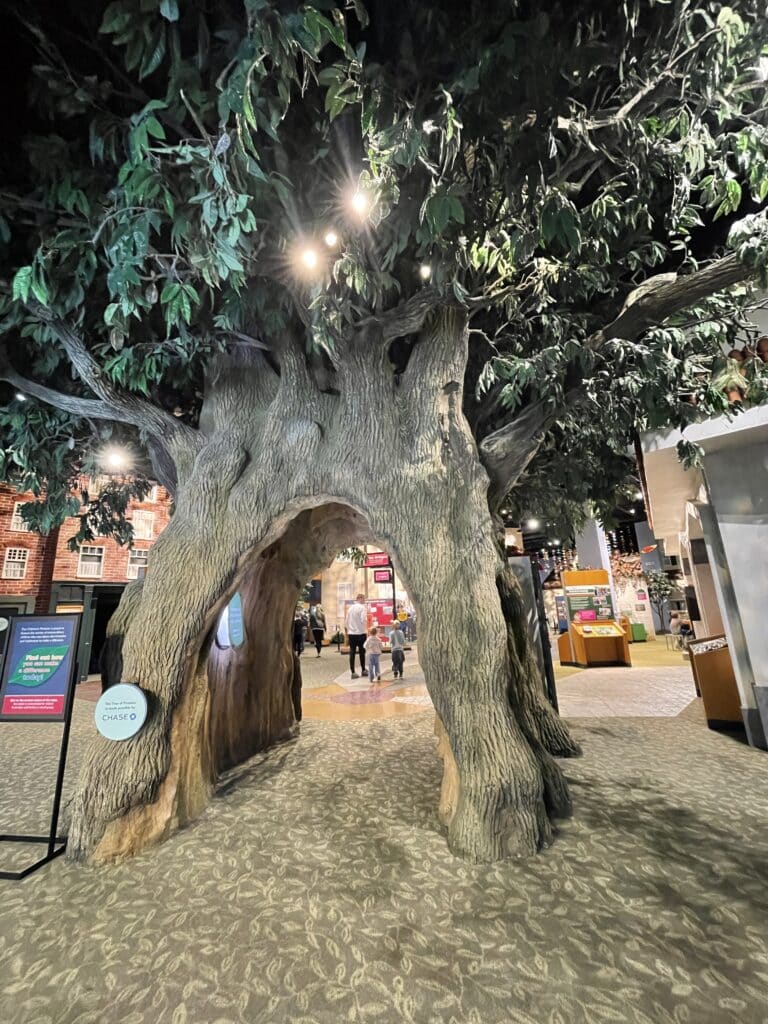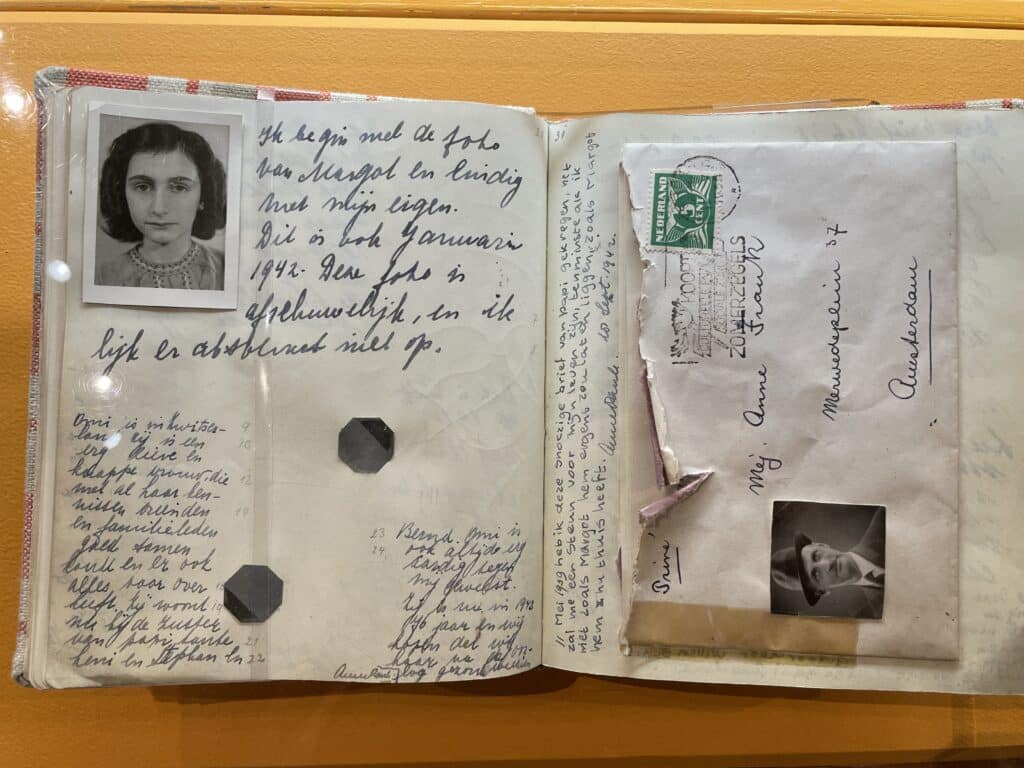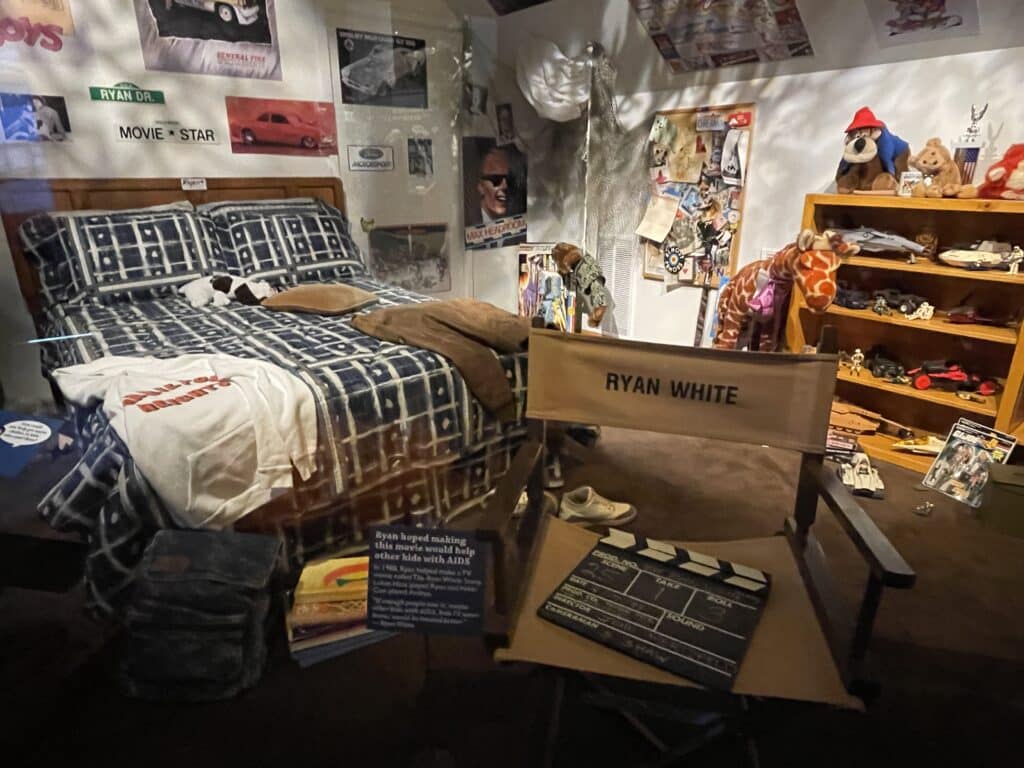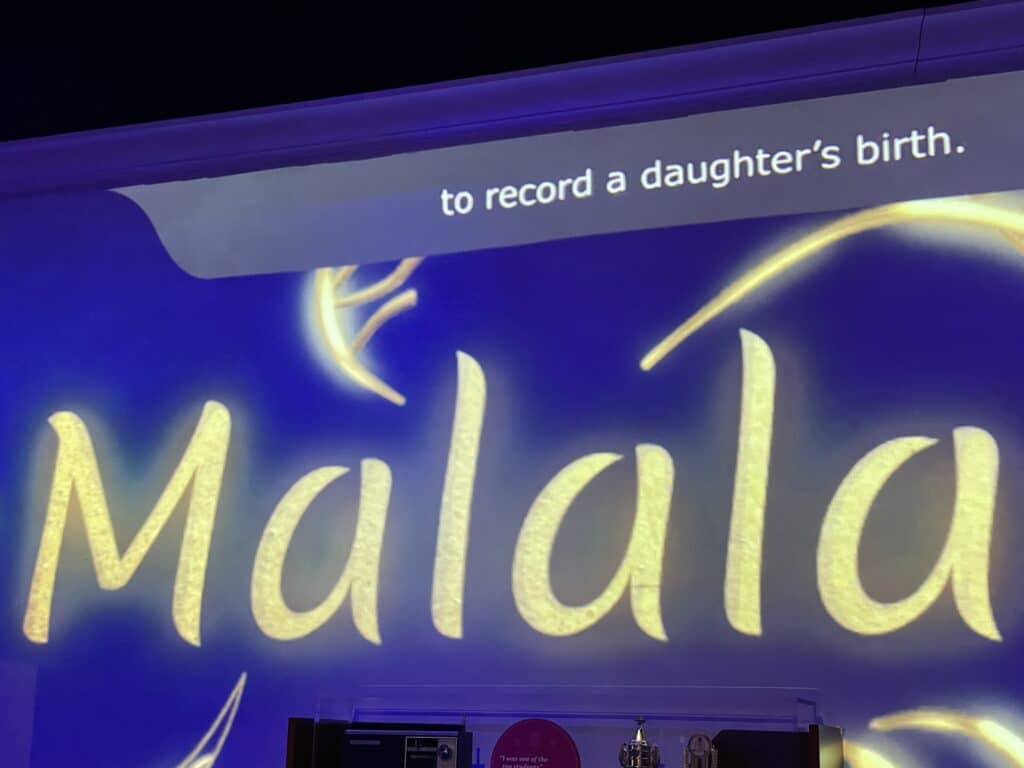Experiencing the Power of Children at the Children’s Museum of Indianapolis
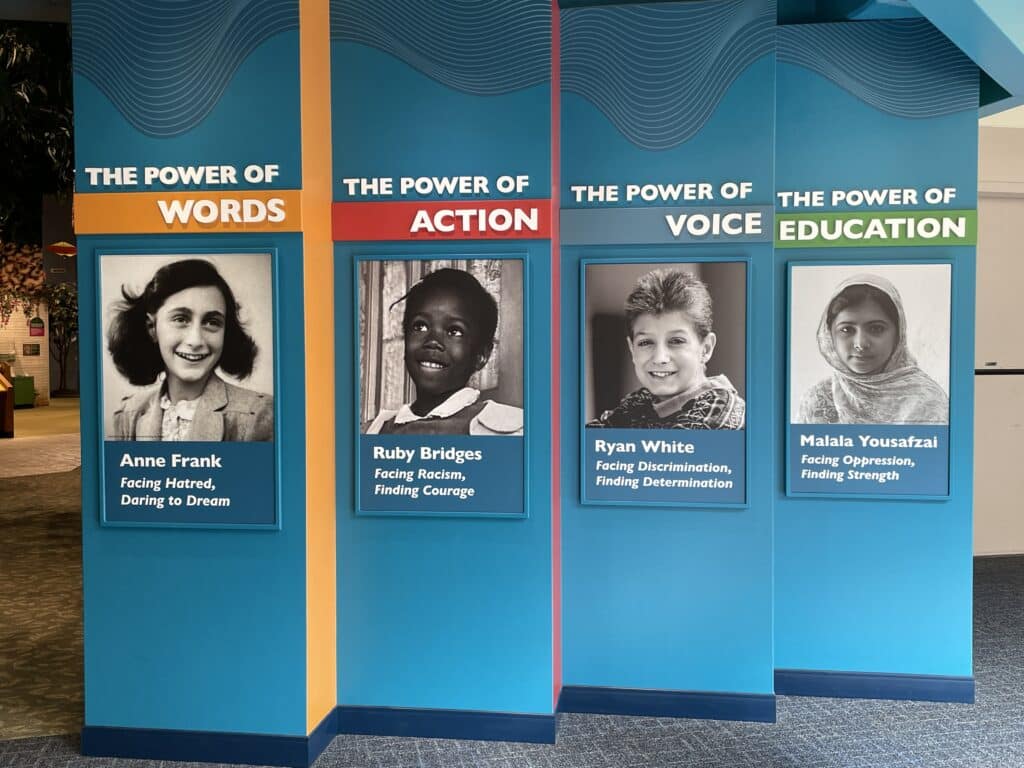
In this episode of World Footprints, hosts Tonya and Ian Fitzpatrick share the Power of Children exhibit at the Children’s Museum of Indianapolis. They speak to Monica Ramsey, Director of exhibits and interactive media, as she guides them through the Power of Children: Making a Different exhibit and shares the stories of four extraordinary children who have significantly impacted the world – Ruby Bridges, Ryan White, Malala Yousafzai, and Anne Frank.
“When the whole world is silent, even one voice becomes powerful.”
—Malala Yousafzai
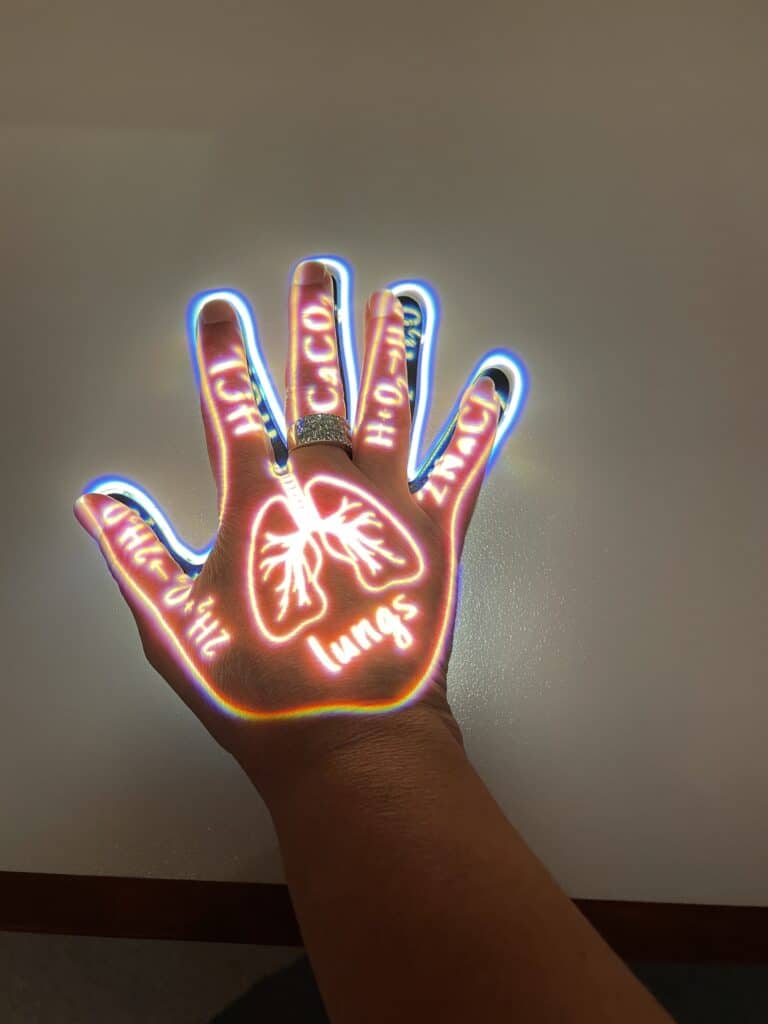
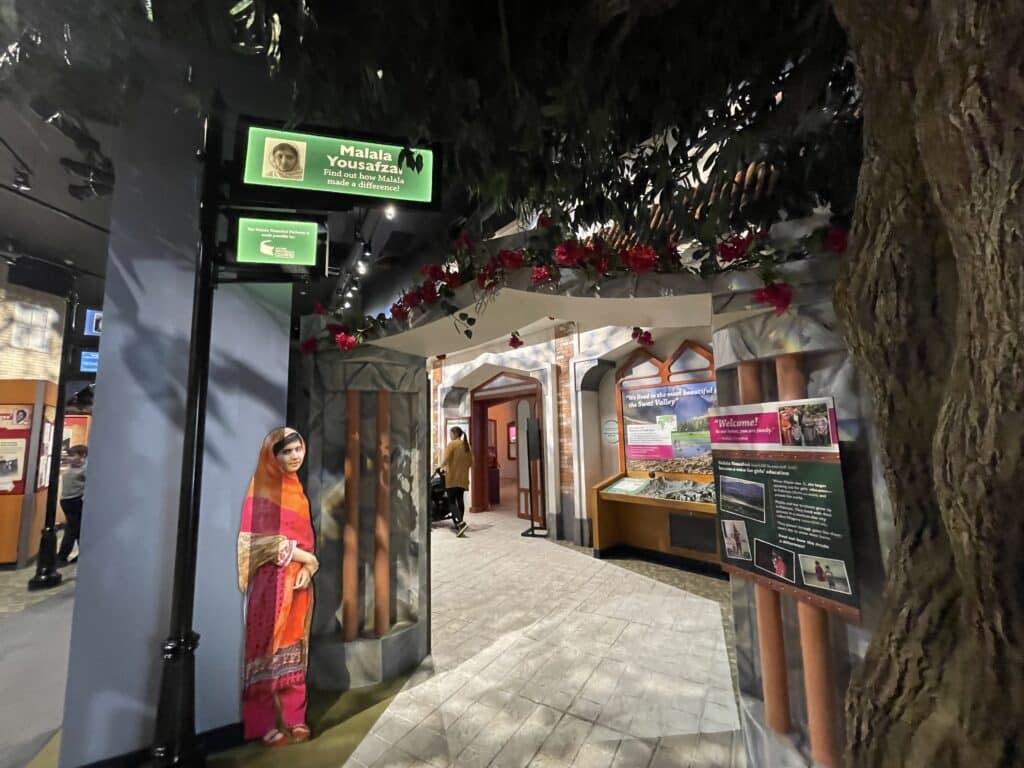
The Power of Children exhibit aims to inspire visitors to take action and make a difference in their communities by highlighting youth’s power and ability to overcome hatred, racism, and fear. The stories of other extraordinary children who are making a difference like climate activist Greta Thunberg are also included in the Power of Children exhibit. From its origins in 1925 to its current status as the biggest children’s museum in the world, the Children’s Museum of Indianapolis continues to provide extraordinary learning experiences that transform the lives of children and families.
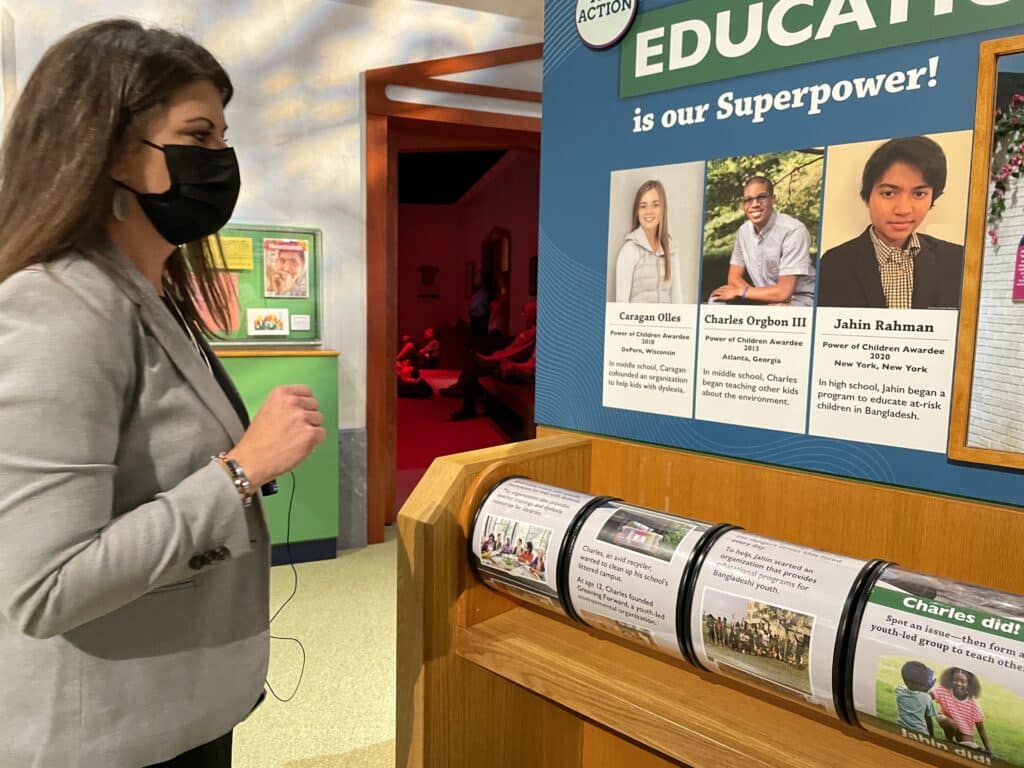
Podcast Timestamps
[2: 25] About Children’s Museum of Indianapolis.
[3: 49] The Promise Tree.
[5: 54] The Story of Malala Yousafzai.
[10: 05] The Story of Ryan White.
[14: 54] The Story of Ruby Bridges.
[17: 26] Challenges Experienced.
[18: 44] The Story of Anne Frank.
[21: 45] Diverse Offering and Exhibits available at the Museum.
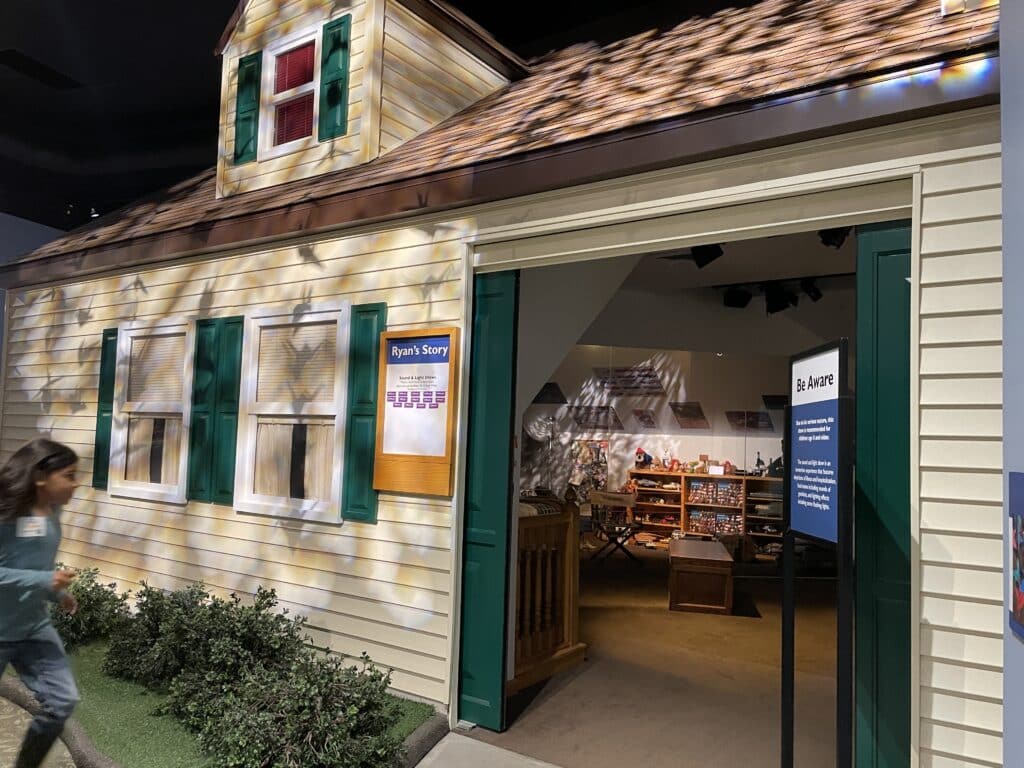
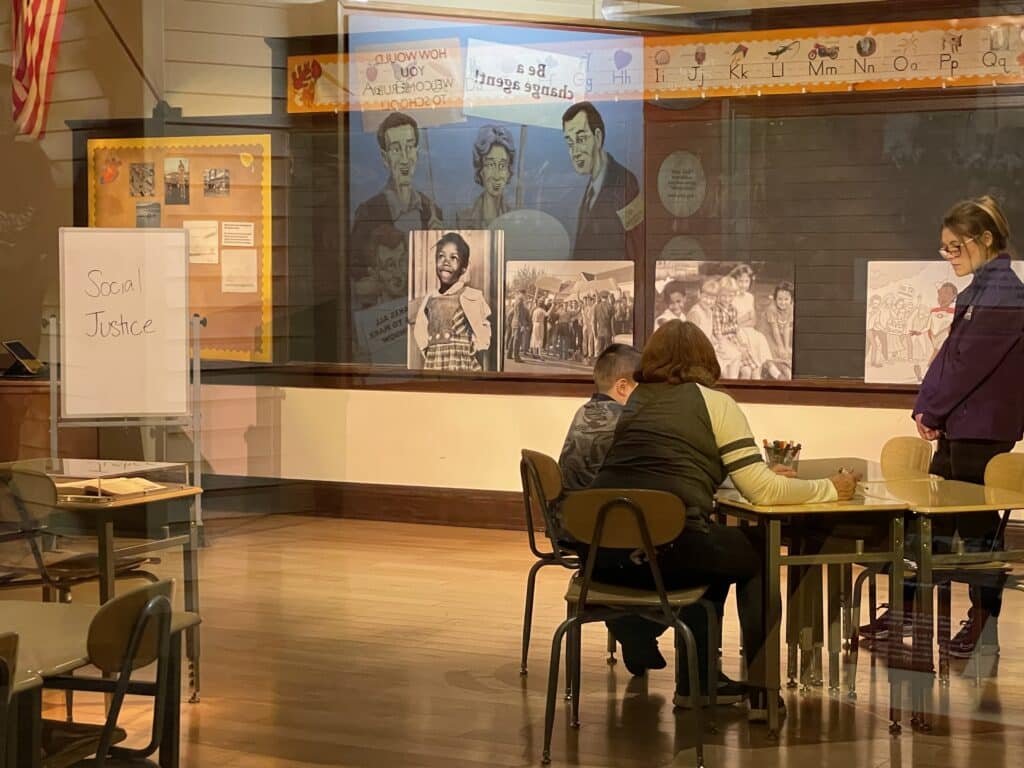
Notable Quotes
“It’s not about matching what they did at the scale that they did; there are so many other opportunities for you to be empowered.”
“We’re not shying away from the intense imagery. We want people to talk about it and see the gravity of this situation.”
“Everything we do across the building is to make sure that we are thinking hard and intentionally about our accessibility.”
“When the whole world is silent, even one voice becomes powerful.”
*Podcast and Link to Full Transcripts Below Map*
Book Your Stay Now in Indianapolis
Use the interactive map below to search, compare and book hotels & rentals at the best prices that are sourced from a variety of platforms including Booking.com, Hotels.com, Expedia, Vrbo and more. You can move the map to search for accommodations in other areas and also use the filter to find restaurants, purchase tickets for tours and attractions and locate various points of interest!
Guests:
[00:00:11.530] – Monica
Violence and gun violence is a huge part of the story and really making sure we were talking directly with families about how, again, to create that space that doesn’t shy away from how important and dramatic and tragic the story is, but also in a way that makes it approachable and provokes that conversation. And the same thing absolutely is true with Emmett’s story. We didn’t want to shy away from that as well. We wanted to make sure that we were speaking very clearly and plainly and talking about the importance of what happened and saying the words of what happened and making sure that we were propelling people into action.
[00:00:55.410] – Tonya
That’s Monica Ramsey, Director of Exhibits and Interactive Media at the Children’s Museum of Indianapolis. I’m Tonya Fitzpatrick.
[00:01:05.100] – Ian
And I’m Ian Fitzpatrick. And this is World Footprints, the podcast that connects you to the world through stories.
[00:01:13.110] – Tonya
Monica took us around the exhibit–The Power of Children Making a Difference–a permanent display at the Children’s Museum of Indianapolis. The Power of Children debuted in 2007, initially sharing the incredible stories of three extraordinary children Anne Frank, Ruby Bridges and Ryan White. A fourth child story, Malala Yousafzai, was added to the exhibit in 2021. All four children are featured because of their unintentional legacies and emergence as heroes of the 20th century by overcoming hatred, racism, and fear.
[00:01:55.470] – Ian
From its founding in 1925 by Mary Stuart Carey, an Indianapolis philanthropist whose family made its fortune making glass, Carey used her vast wealth, travels, and political influence to bring a children’s museum to the Circle City after visiting the Brooklyn Children’s Museum in New York City. Since its origins, the mission of the Children’s Museum has been to create extraordinary learning experiences across the arts, sciences, and humanities that have the power to transform the lives of children and families. Nearly a century later, the Children’s Museum of Indianapolis has become the biggest children’s museum in the world. But it’s not like any other children’s museum you’ve experienced.
[00:02:40.590] – Tonya
The Children’s Museum of Indianapolis offers more than touch and learn STEM exhibits and programming. In spaces like The Power of Children making a Difference, the museum provides spaces for history and the voices of social justice to be heard in the hope that visitors will be immersed in the stories and be inspired to find ways to make a difference themselves.
[00:03:06.010] – Ian
A towering chestnut tree stretching from the floor to the ceiling greets you as you enter the Power of Children Gallery. Named the Promise Tree, this artificial monolith of a tree draws its inspiration from the chestnut tree that provided Anne Frank solace from the Holocaust unfolding outside her attic window from her Amsterdam home. The promised tree is so immense, the archway carved in its base is large enough to provide the gateway to enter the exhibit.
[00:03:35.070] – Tonya
As the war closed in on Anne and her family, her tree became a reminder of and hope for a better world. Today, the model of Anne Frank’s tree holds many promises for us all.
[00:03:49.290] – Monica
You can see in some areas, you can see these silver leaves, too, that are promises that people made when we opened the exhibit and we were adding to the tree. But this Tree of Promise is meant to be kind of the gateway to come in and see these stories. And then you can take a pathway, you can choose a pathway to go and learn more about Anne’s story and learn more about Ruby Bridges story and Ryan’s and Malala’s. And then those will take you through, again, through their stories and the history and the context around their stories. And then they each have an all about area. It’s kind of how we set in context what happened after, kind of that significant point in their story. And so, again, what they are doing now, others who were part of helping them or who were part of the issue that we talk about with each of them. So, it’s another opportunity to talk about more powerful children…
[00:04:42.810] – Monica
I think we talk about two or three dozen children really, in this space. Beautiful tree is just so beautiful and just a really interesting and inviting thing to walk through. And again, imagining how it was a source of peace and connection to the outside world through Anne’s eyes is just really interesting. And then as you walk through it, you hear promises that kids had written down and then we had them record it. And so, you can hear what their promise is…
[00:05:14.870] – Tonya
Oh wow…
[00:05:15.110] – Monica
On any different scale too. You hear adult voices, too. This is definitely about the power of children, but we talk throughout about how adults really need to be part of that with them and how they can help support children to feel that they’ve got power to make a difference.
[00:05:30.360] – Tonya
Okay
[00:05:31.610] – Exhibit Audio
I promise that I will listen. I promise to be nice to everyone I know. I promise to help the environment. I promise to take some time off watching TV and help my friends around the house.
[00:05:42.900] – Tonya
I love this.
[00:05:44.340] – Ian
Leaving the Promise Tree, a short path leading to the space honoring Malala Yousafzai, the youngest person ever to be awarded the Nobel Prize.
[00:05:54.140] – Monica
So, we worked really hard to recreate the authentic spaces where they lived or was their sanctuary. So, Malala’s home is kind of an amalgamation of a few different places her family lived over the years, because they did have to move around a lot as we’re moving through her formative years and going to school. And that was just kind of the nature of how it was. So, we’ve got the exterior of one home and this gate is the entry point to the home that was actually the last one they lived in before they had to flee for the UK after she was attacked. We really wanted to talk about because every time we talked to Malala’s father, who was one of many, but obviously a key advisor on this, which is true of any of the spaces we have, Ruby is our primary source to build her area. Ryan’s Mother, we worked with Anne Frank House, and we worked with the Yousafzai family and the Malala Fund as well as members of our local community who are from Pakistan. Tremendous support from them and really helping to help us build this picture. And one of them was talking about how beautiful Swat Valley is and where they lived…
[00:07:14.170] – Monica
And another key point in everything we do across the building is to make sure that we are really thinking hard and intentionally about our accessibility. And for this and a number of other things, I think we’ve done a lot in the last few years understanding how we can make sure people who use wheelchairs or other mobility devices can participate, but really thinking about those who have low vision or who are blind or are deaf or hard of hearing. And so, this map of the Swat Valley is very tactile and then it has sensors to activate the narration that we’re hearing that describes the river, and Angora, and just again, the beauty of the mountains. And these photos, some of these photos are from Yousafzais or journalists that they’re friends with who have taken these photos. So, it’s really great to be able to include that.
[00:08:12.110] – Tonya
Lovely.
[00:08:14.270] – Monica
So, it’s really critical. And again, that’s one of the successes that we built upon and know is really important to include in the spaces. Like the initial experience, having the ability to talk one on one with one of our staff members to help interpret all of this content is really, again, what’s really successful, that is to broach these difficult topics…
[00:08:37.100] – Monica
So, we have in each of the four areas we have programming that ranges from informal conversation to museum theater where someone is embodying a character that is part of the story. And then we also have sound and light shows, which is essentially a film, but it’s surrounding you in the room. There is lighting and video and sound and it’s a really immersive experience. Specifically, the programs that are more informal, they’re still structured, but a staff member will come out, they last about ten or fifteen minutes. Staff member will come out and figure out how to connect them with it. So, one of my favorites that was developed when we brought in the Malala story was really kind of a quiz to figure out what your power word is. And so really a great way to say, well, wisdom may be the power word that came up and here are some suggestions of how you can use that power for good. And I think a lot of times people come in and they’re so overwhelmed by the gravity of some of these stories and they’re like, what can I possibly do? And it’s an opportunity for us to say it’s not about matching what they did, it’s a scale that they did there are so many other opportunities for you to be empowered. So that’s what those programs are all about.
[00:10:04.930] – Tonya
In the early 1980s, a disease called AIDS terrified the nation and misinformation about how the disease spread was rampant. Ryan White, an Indiana teenager, contracted AIDS in 1984 through treatment for his hemophilia. And he was expelled from school due to his condition. His fight to be allowed to return to school and live a normal life made him famous around the world. Ryan lost his fight with AIDS in 1990. Ryan’s family kept his bedroom intact and they contacted the Children’s Museum of Indianapolis about preserving his story. Ryan’s Face, this is a recreation of his bedroom and his home in a town just north of Indianapolis. And so, this was his mother came to us and said, this is what we have. And just lots of great relationship building and conversations about how we can use this to tell the power of Ryan’s story and inspire other kids. So, this is a space that really talks about how he was a normal kid. There’s a lot of familiar, at least to those of us who grew up with him at the time, but that sparks amazing family conversations about what you did as a child and what your kids recognize.
[00:11:28.810] – Monica
There are a lot of celebrity memorabilia in there because he had so much celebrity support throughout the times he was advocating for AIDS care and acceptance. So, Ryan’s face is definitely about step in a little bit more, having the power of your voice and speaking out. And so, his advocacy everywhere but the Congress and advocating just within his school system. And then the “All About Area” of Ryan talks about when he died and talks about his family after and how people have been inspired after the fact. We actually added the Ryan White archives, which is again something that we acquired from his mother. And they are just piles of fan letters and support and memorabilia. And we actually archive that. So much of it is available online and it’s primary source material that kids can use or researchers can use. So really great access there. So that’s Ryan’s area and the pathways leading up just set the stage for you. So, Ryan’s pathway talks about who his family is and his sister loves to ice skate. And here’s the baby blanket that Ryan had. And then it talks about his diagnosis with hemophilia, what that is and the factor eight…
[00:13:01.870] – Monica
And that treatment was how he contracted the disease. We also talk about what else is happening at the time, like why were people so scared of AIDS and the lack of education. And that was his whole point. You just need to educate yourself. And he found advocates and friends in the school system that helped him do that, but really talking about the full context of the time to talking about their story, but why their story was so profound…
[00:13:27.950] – Monica
So, with Ruby–same thing. Talking about her family in New Orleans, talking about segregation, having some really strong object presence so people can see what that looks like, and lots of questions and prompts. How would you feel if you were forced to follow laws that you thought were wrong? We’re all about setting up conversations, right? And then as you come into Ruby’s immersive area, it’s the classroom that she was in as a first grader. And you have to walk through the doors with protesters on either side of you. So, we have cutouts of actual photos of people who are protesting. And again, we’re not shying away from the really intense imagery. We want people to talk about it and see the gravity of this situation…
[00:14:15.490] – Monica
And then we have the voiceover of those chants that she heard when she walked in, this little, tiny girl. And so that when you come through, it’s her safe place. Right. Hey, Logan. So, we’ve recreated her classroom right down to a little jacket hanging all by itself to her lunch that she would hide Mrs. Henry’s desk and then a desk that she may have sat at. So just really recreating again that space. You feel like you’re a part of the story.
[00:14:53.950] – Ian
The year Ruby Bridges was born, the United States Supreme Court charted a new course for public education when it ruled that segregation was unconstitutional in the landmark case of Brown versus Board of Education. Six years later, in 1960, ruby Bridges became the face of this momentous decision when she integrated the white school system in New Orleans.
[00:15:24.890] – Monica
So then when you leave this space–“Ruby’s All About Area”–again, sets the scene in the country around that time. So, talking about the Civil Rights Movement, talking about I love the foot soldiers for freedom. Just seeing all the other activists, not all of them, a taste, a small taste of everyone else who was working at the time. The list is so long. Right. And I get overwhelmed because the work is still so important. So also talking about legislation that was passed and those objects that we have are really important to kind of help set the scene as well in each of the areas. And I didn’t really talk about this in Ryan and Malala’s, but in each of these all about areas, we’re also talking about what happened in Indianapolis at the time, too, and again, in the greater context of the time. So, it’s space travel. And here’s the things that people were reading and watching on TV and the toys that were being played with. So, again, just being able to share those connections when they’re coming through with their grandparents or parents or even great grandparents now.
[00:16:35.180] – Tonya
Of course, one figure, a Klansman.
[00:16:38.750] – Tonya
Oh my.
[00:16:39.600] – Monica
Yeah. Again, powerful. It happened here. It happened here. And we need to make sure that that is not glossed over. I personally am a firm believer in the phrase: “Museums are not neutral,” which is a very widely shared phrase. And I am really proud to work in a place that embodies that. It’s about making sure that we share tough history and we put questions out there for people to consider and be like, oh, I had no idea. And even if it seems like it’s so far away, again, that’s why we’re doing the Till exhibit, to show that we are still working through this.
[00:17:18.090] – Tonya
Have you guys gotten any pushback? Because there are a lot of people who are not comfortable with the full narrative of our history being shared.
[00:17:27.030] – Monica
Yes, of course. And I think that we would be confused if we didn’t, because to your point, it is very contentious, it’s very divisive, and that is why we feel this needs to be there. We feel that we need to put this history there. We need to put these questions out there so that we’re sparking conversations and we’re a place where you can model what civil discourse looks like…
[00:17:51.020] – Monica
This is how you have conversations with people you don’t agree with or you just don’t know about something, and you need to feel like you can ask questions in a respectful way. Some people just don’t engage because they’re afraid to ask questions. I can think of a lot of instances that I’ve been in where I’m just like, gosh, I don’t even know how to approach this without seeming disrespectful or seeming ignorant or how do we help teach that and put that in a way for kids to be able to absorb and their adults to feel like they can help guide the kiddos to that, too. So, yeah, that’s what all of this is about. After walking through the spaces dedicated to Malala, Ryan, Ruby and other dynamic children like Greta Thunberg, we ended close to the Promise tree at the house where Anne Frank and her family sought refuge from the Holocaust terror. Anne area is the Annex where she and her family hid with others. And so, again, talking about what their daily lives were like, why they were there. And again, you can see we have swastikas there. And there is behavior that we’ve had to redirect when people maybe just don’t understand really the gravity of what they’re doing and being able to have those conversations, our staff are really well trained to address that and make sure that it’s turned into a teaching moment that is really sending them away with something to think about…
[00:19:21.990] – Monica
Now, I’m not saying that and highlighting it to say that that happens often, but to our point earlier, there are things that we have to anticipate and think about and be prepared for, and that’s really important for us to make sure our staff feels that support and training and all of that. So, talking about Anne, talking about what was happening in Germany, in Europe, and right down to when her sister got her letter to go to a camp and that’s what sent them into hiding. And then the rest of the story is again talking about what happened to Anne and her family and why the diary became so important, how they rediscovered it, and how that was used and so powerful for so many people to read. We did learn, not surprisingly, but one of Malala’s…gosh, I can’t remember who it was that gave it to her, but reading Anne’s diary was really important to her as a child, and she was really honored. We were honored to be able to tell her story, but she was also just so honored to be in a space with Anne because that has had such a profound impact on her.
[00:20:30.010] – Tonya
Is this meant to be a smaller version of this?
[00:20:35.290] – Monica
Oh, this tree?
[00:20:36.530] – Tonya
The chestnut…
[00:20:37.090] – Monica
Yeah. I think that this is just another kind of oak tree to round out the entire experience. Yeah. The tree that was at the Annex was quite tall and towered over the building. It actually came down in a storm within the last decade. But we were the site in the US. To receive, like, thirteen or fourteen saplings from that tree, and so we quarantined them here, and then they went out throughout the they went to other sites around the country, and that was pretty amazing. But we have one out front that is a chestnut tree. It is so big. It is grown. It was, like, this big, 3ft high, and now it’s like I don’t know. It’s much taller than this tree, but yeah, so that’s out front in our building, of our building. And that is from the chestnut tree that she looked at.
[00:21:38.110] – Tonya
Excellent.
[00:21:45.050] – Tonya
The Children’s Museum of Indianapolis is really like no other museum I’ve ever seen before. The stories, particularly through this exhibit, the Power of Children, were incredibly powerful. There’re stories we’re still talking about today: racism, fear, and adversity. But I don’t want to forget about some of the other things that the museum offers. They had an exhibit, a temporary exhibit on Emmett Till that is now traveling the globe or traveling the country. They have sports sections. They have a paleontologist section. So, a lot of STEM exhibits, but certainly something for everyone. And I think one of my favorite things personally was the outside tennis court, where Barbara Wynne, who is known as a mother of youth tennis because of the program she created in conjunction with Arthur Ashe. She comes every day. She’s 90 years old, and she comes nearly every day and continues to train young people in the sport of tennis. And I think that’s just absolutely phenomenal.
[00:23:07.080] – Ian
The Children’s Museum of Indianapolis is one of those attractions that Indianapolis has that is world class, that is really a calling card to invite close to a million people a year to come there and see this. And the city, historically has been trying to overcome notions that it’s a sleepy Midwestern town, Naptown, and all sorts of other monikers to overcome what people perceive as some plain place out in the Midwest. But this museum this museum is one of those places that firmly makes Indianapolis a major league place, more so than those sports teams and other things that they’ve worked on trying to draw people there.
[00:23:54.920] – Tonya
Absolutely. It’s like a little blue dot in a red sea. Or Indiana is one of the red states in this country. And so, I think it’s the social justice that they touch on, the progressiveness, just the learning experiences. That’s what really sets the city aside, I think.
[00:24:17.290] – Tonya
“When the whole world is silent, even one voice becomes powerful”–Malala Yousafzai.
[00:24:25.050] – Tonya
We’re Tonya and Ian Fitzpatrick, and we’re so grateful to have you here. It would mean so much if you would leave a five-star rating on Apple podcast or wherever you’re listening from.
[00:24:37.040] – Ian
We’d love for you to join our community, so please subscribe to our biweekly newsletter at worldfootprints.com.
[00:24:45.110] – Tonya
Thank you for your support and for helping us to make an impact and share the world through the stories we offer on World Footprints.
[00:24:56.630] – Male Announcer
This World Footprints podcast with Ian and Tonya Fitzpatrick is a production of World Footprints, LLC, Silver Spring, Maryland. The multi, award winning podcast is available on worldfootprints.com and on audio platforms worldwide, including iHeartRadio, Public Radio Exchange, Apple Podcasts, and Stitcher. Connect with the world one story at a time with World Footprints. Visit worldfootprints.com to enjoy more podcasts and explore hundreds of articles from international travel writers. And be sure to subscribe to the newsletter. World Footprints is a trademark of World Footprints, LLC, which retains all rights to the World Footprints portfolio, including worldfootprints.com and this podcast.
